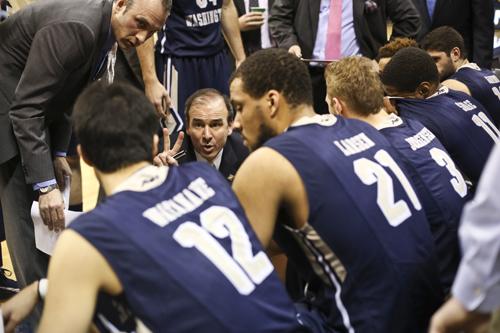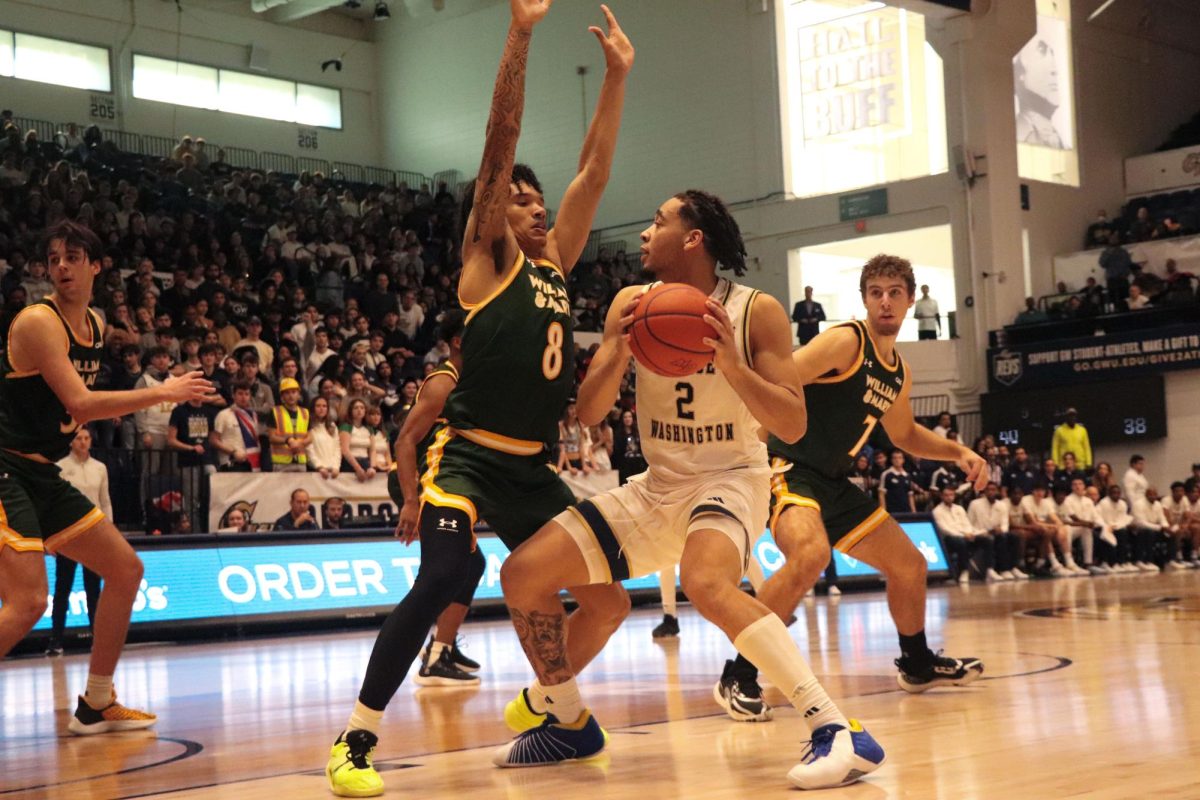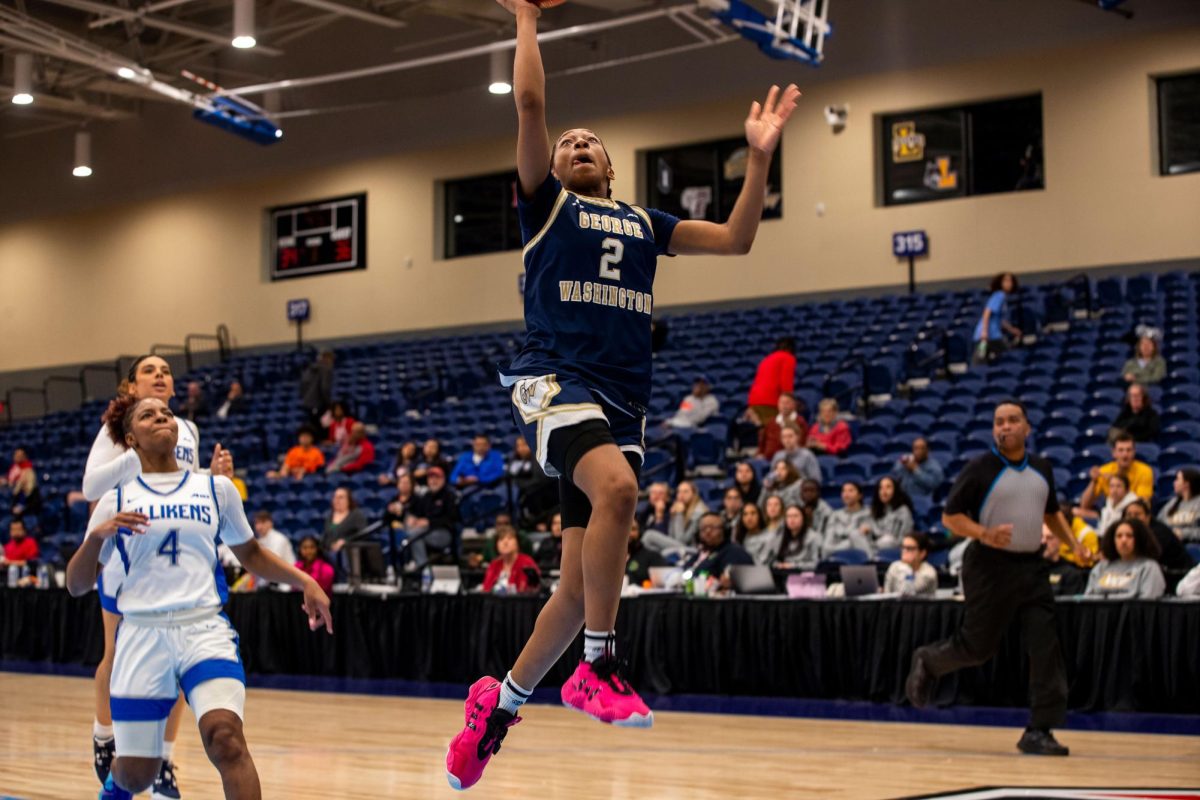
Just before halftime, legendary Connecticut coach Jim Calhoun talked about the duo of rule changes in place for the National Invitational Tournament. In likely preparation for an NCAA rule change, the NIT is experimenting this year with a 30 second shot clock instead of a 35 second one. The tournament has also put in place a 4-foot restricted area arc in place of the 3-foot one.
“We got to get attacking again. When that’s normal, that’s not good,” the former Huskies coach said about the widespread slow-paced offense in college basketball.
It has been well-documented how scoring output has been way down this year. It is approaching near record lows, averaging below 70 points per game. The pace of the game has slowed up, true by the numbers and by the eye-test.
Enter the NIT for observation.
In the first round of the tournament the 32 teams who did not make the cut for the Big Dance averaged 71 points per game. The winning team averaged 76.25 points and five different teams scored over 80 points. People like three-time National Champion coach Calhoun are excited. The pace of the game has picked up and with good reason.
When the Colonials played their first round game at Pittsburgh Tuesday evening on ESPN players, coaches and fans saw some of the potential effects.
By the box score it barely looked effective or pretty: the final was 60-54 GW. GW scored about seven points below their season average, but Pittsburgh missed theirs by roughly 13. The Colonials shot 33.3 percent in the game and the Panthers shot 48.9 percent. The argument by the numbers is pretty poor that the game was enhanced offensively by the 30 second shot clock.
Pitt said they barely prepared for the change, the players citing that they normally practice with a 30 second shot clock. There were questions of how much of an effect it had on the game.
“I don’t know. It was interesting. I thought about that afterwards. It didn’t seem to have a lot of effect,” Pittsburgh head coach Jamie Dixon said. “I think it’s something we’re going to see. I think it’s something that’s going to be put into play shortly, so get used to it.”
GW, however, enjoyed it, led by junior Kethan Savage who had a team-high 17 points off the bench. Since moved as the sixth man he has been up and down. In the first round of the NIT Savage said he knew Pitt likely didn’t have time to scout him, so he was ready to do his thing.
“I think it helped us. We played a faster pace, moving the ball up and down, move the ball around and not let the ball stay. I think it helps us a lot to get better shots,” Savage said.
He had 14 of 17 points in the first half and attacked all game. It’s his normal means of scoring, but he said the shortened shot clock gave him a little extra incentive to try to score.
But turn to junior Patricio Garino to see the real benefit of the 30 second shot clock for GW. Garino’s modus operandi is defense and though the highlight next to his name Tuesday night was his 1,000th career point, it came courtesy of a Pitt turnover which he turned into easy fast break points.
“We were mentally prepared for 30 seconds and we knew we didn’t need to repeat what we did in A-10 Tournament with the shot clock,” Garino said.
It’s a bit counterintuitive that a shortened shot clock, designed to promote offense, would benefit defense, but that has been the case for the Colonials.
The quickened game seemed to help Garino get in a groove and allowed GW to do what they do best this year: Defend.
In his four years as GW’s head coach, Mike Lonergan’s teams have averaged 67.1 points. Last year, with the dynamic inside-outside threats of Isaiah Armwood and Maurice Creek, the Colonials averaged 73.0 points per game. When Lonergan was at Vermont for six years, his teams averaged 70.2 points.
This year’s average is 67.0 points, though and GW has relied on varying defenses throughout the year, often designed to wear down the shot clock. In their biggest wins, like against Wichita State, their defense starred by doing just that, forcing desperate shots at the end of possessions.
But GW’s defense got a new injection of flow and energy from the faster pace – they used it to force 16 turnovers – even if the shots weren’t falling.
When GW heads to Philadelphia to play Temple Sunday morning they will likely again embrace the shortened shot clock – on the defensive side. It could play out as an advantage throughout the NIT and perhaps into next season.







